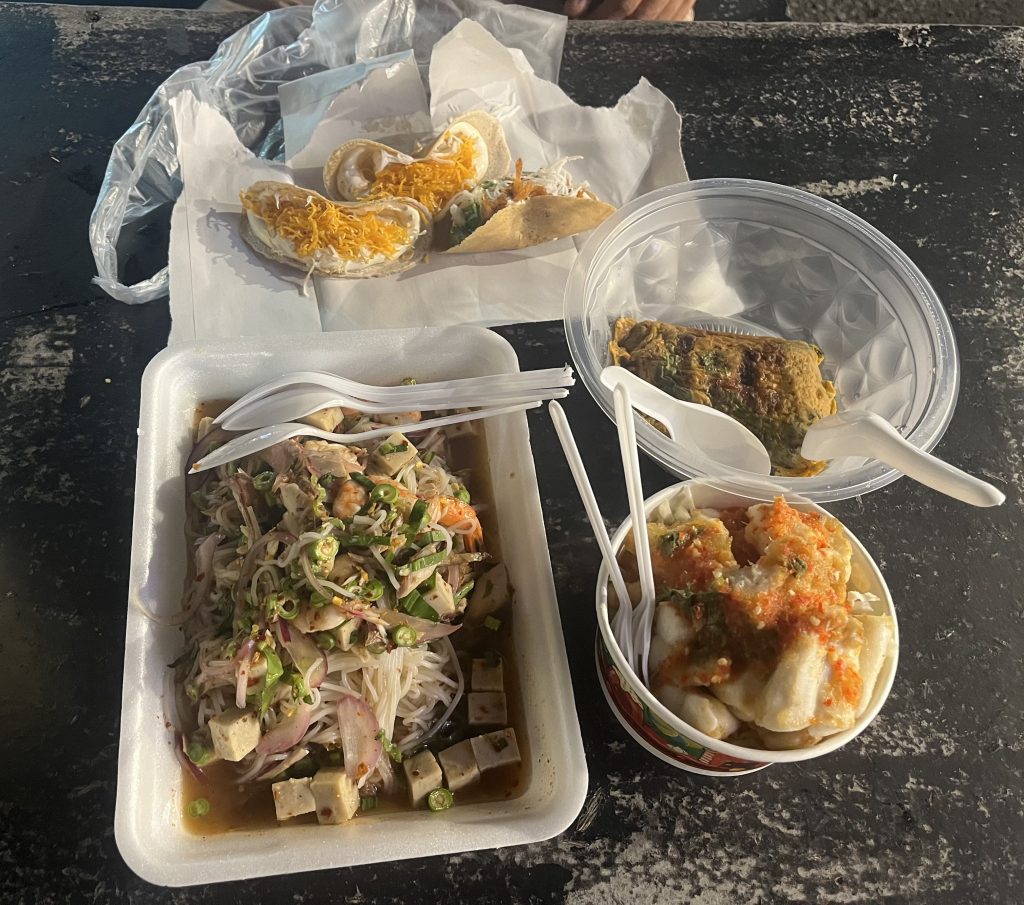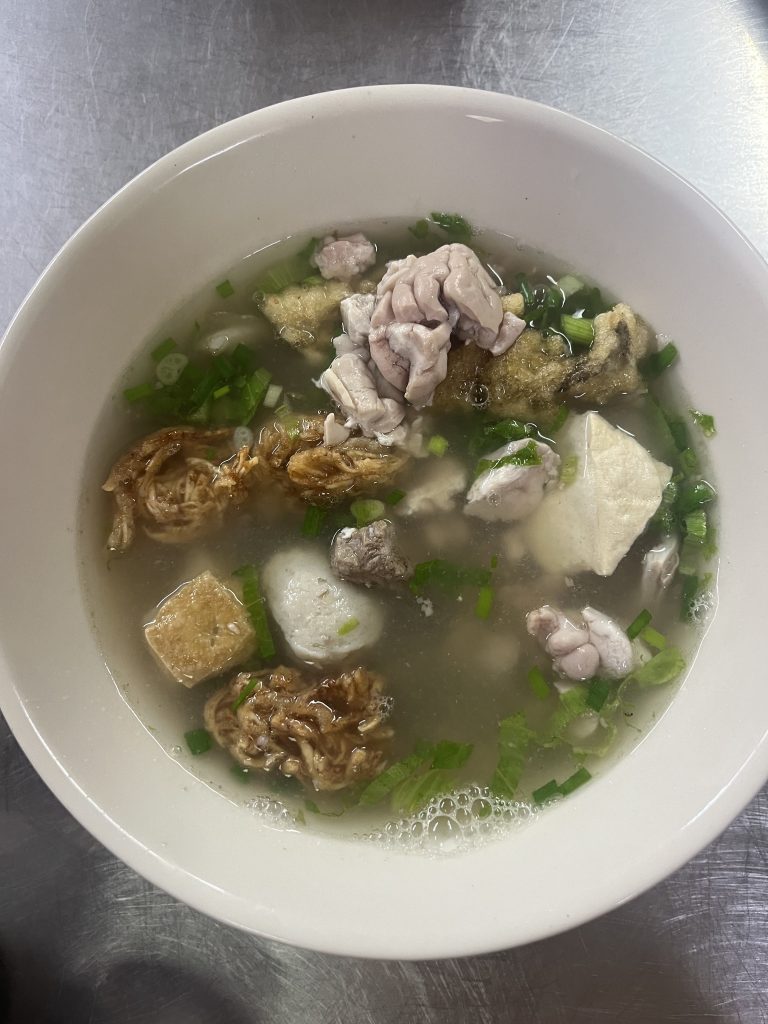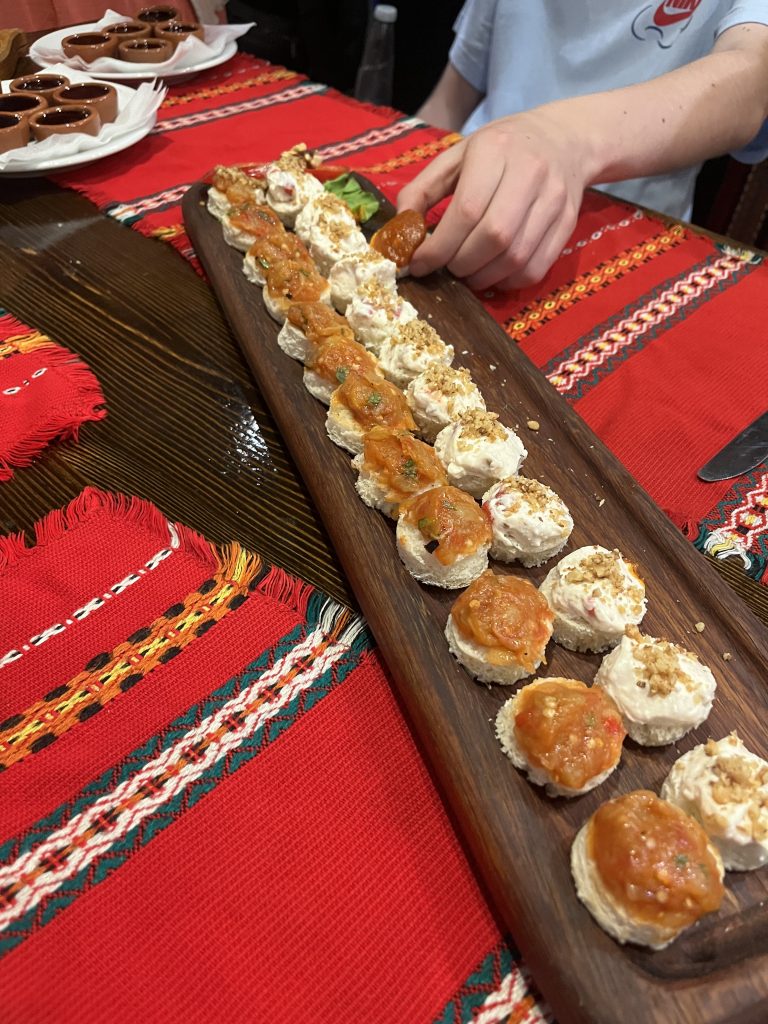Throughout my traveling experiences, food is by far one of my favorite aspects of a culture to discover and rediscover. I’ve always had a love for trying new foods. When I was younger – before I had the means to travel and try them locally – I would find recipes and bake desserts from around the world. I even would dream of opening an international bakery. Anyone who knows me knows I’m not a picky eater by any means, and I’ve tried a lot of out-of-the-ordinary foods. Some are not my thing, but hey, at least I tried it.

When I travel, I’m often not looking for landmark tourist sights or Instagrammable views – I’m looking for the best places to eat in town. I’ve always strayed away from the touristy restaurants with their suited waiters, English menus, and high prices. Some of the best food I have ever had has been out of the city center, side streets where the workers only speak their native language.

Maybe it’s an entire plate of small fish (eyes, bones, and all) fried up with garlic sauce and thrown into a pile on a paper plate by a large, grumpy Romanian man with a few missing teeth. Or maybe it’s ordering something random at a restaurant in Vietnam because my Google Translate app isn’t loading to switch the menu to English, and then later discovering I ate a plate of “entrails” that looked enough like regular noodles that I didn’t think to question it. Possibly, it’s the pig brain soup (and yes, it looked exactly how you are imagining it…an entire, intact brain placed into a bowl of broth) at the restaurant in Thailand that really only serves pig brain soup.

I often try to change the narrative within my own circle about calling unfamiliar foods “weird” or “gross”. Dishes carry stories of a country, of a people. The foods you taste abroad have history. It might be unusual or unappealing to you, but it’s not acceptable to insult a culture by using this certain terminology to insult its food. I encourage everyone to step out of their comfort zone and try something new next time they are abroad. It’ll get you one step closer to understanding the local culture.
One of my favorite experiences in Bulgaria was joining the world’s first – and possibly only – free food tour in Sofia. If you’ve never been on a “free tour” before, well, here’s how it works: guides take you on a tour without charging upfront. Instead, participants can leave a tip at the end based on what they found the experience to be worth, or how much they have the means to pay. Usually these are historical walking tours, but a company called Balkan Bites in Sofia offers this through food tasting at local restaurants. It wasn’t just about eating, though. I learned so much about the history, traditions, and quirky food-related stories that you wouldn’t find in the average travel guide. As we ducked into cozy restaurants, the air filled with roasted peppers and fresh herbs. Between bites, our guide told us stories that made the dishes that much more flavorful. I think this is an amazing way to make local food culture more accessible to everyone, while supporting the locals who are passionate about their city. While not too unusual of a food expenditure for me, I enjoyed it a lot and believe this is an awesome idea to support.

I learned almost right away that many of the dishes I’ve tried in Bulgaria are similar to the cuisine of the neighboring Greece and Turkey. Of course, debate will often come with shared flavors as each country proudly claims certain dishes as their own. Within Sofia, though, I noticed a lot of Greek and Turkish restaurants during my stay. I was getting a little frustrated because I wanted Bulgarian, but I realized that maybe Greek and Turkish food is Bulgarian just as much as Bulgarian food is Bulgarian. The history of Bulgaria is so intertwined with Greece and Turkey that it is hard to trace a dish to just one specific origin.
A highlight of the tour was discovering Bulgarian honey garlic, a deliciously aromatic and just as deliciously tasting herb that is only grown and harvested in this specific region. It is even hard to find in Sofia, as it’s grown much more east in the Bulgarian mountains. I bought some from who the locals claim is basically the only guy in Sofia who sells it fresh. I brought some back for my dad, who loves experimenting in the kitchen. I can already imagine him transforming a simple roast into something magical with this spice.

One of the most surprising traditions I learned was not tied to a centuries-old traditional dish, but to McDonald’s! Bulgaria was under the Soviet regime for 45 years, gaining liberation in 1989. So it was a huge moment for the nation when its first McDonald’s opened in 1994 because under the regime, foreign brands were banned. The people of Sofia were camped out in sleeping bags overnight just to be there on opening day. Even now, some Bulgarians – mostly of the older generation – make the sign of the cross (Father, Son, and Holy Spirit) before entering a McDonald’s. It’s a symbol of gratitude to the freedom McDonald’s represents for the country.
And then there was one tradition that just totally charmed me, and that is completely exclusive to Bulgaria. Nobody else does it. In the past, when Bulgarian families had many children and very little space, tables were too small to hold all the serving dishes. Their solution? Hanging food from the ceiling in plates and pots attached to chains! The dishes would just dangle above the table while everyone was eating under them. Some restaurants in Bulgaria still keep this tradition alive, and it was super cool to see.
Food is never just about eating. It’s memory. Identity. History and resilience. It’s the smoke in the air of a night market, the crunch of fried fish, the sweetness of a unique herb pressed between your fingers. Every local dish carries a story, and I love going on journeys to find the best ones anywhere in the world. If you’re traveling to Bulgaria, check out Balkan Bites for the local free food tour experience. Otherwise, wander away from the touristy restaurants at least once and try something new. It might be your next favorite thing!

Subscribe for post notifications!
Follow my Instagram @emmathibodeauu and my TikTok @stepsineverycorner for travel updates and dives into other topics.
***Use my promo code STEPSIN25 for WorldPackers membership discount!***

Leave a Reply